Artifacts at the Hiroshima Atomic Bomb Museum
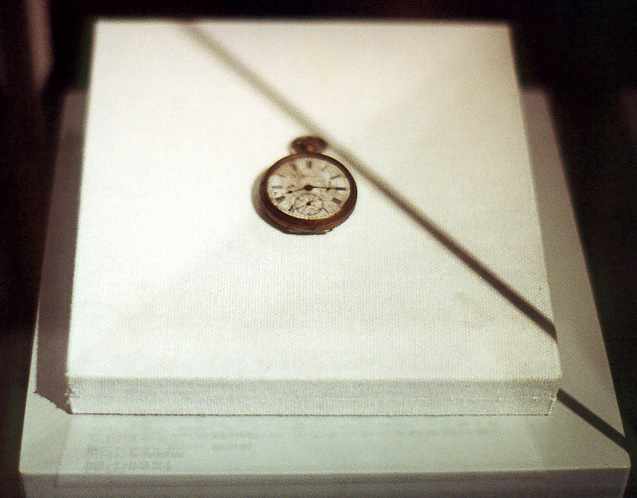
The museum has a couple of watches on display which were stopped at the time of the explosion - 8:15 in the morning. |
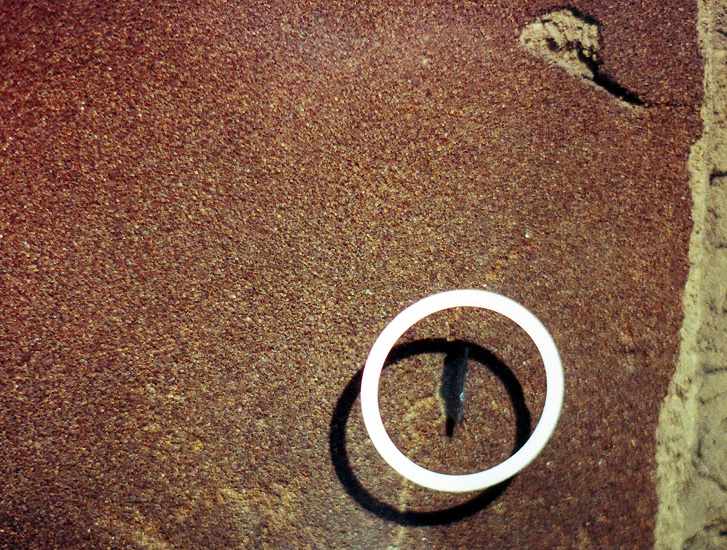
The explosion created a supersonic shock wave which was responsible for destroying most of the buildings in the blast zone. Fully half of the bomb's energy was released in the form of this wind, which spread out at 440 meters per second (1600 km/hr or 1000 miles/hr; the speed of sound is 330 meters per second). It not only knocked things down, it also filled the air with debris. The section of concrete wall below has numerous glass shards embedded in it, even though it was 2200 meters (one and a half miles) from the hypocenter, and sheltered from the blast by a low hill. |
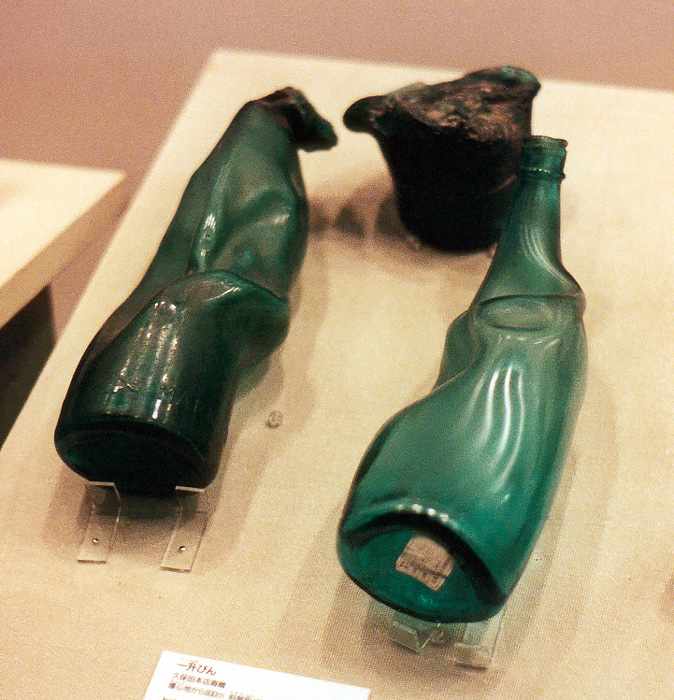
The heat of the blast, estimated at 3000 to 4000 degrees celcius (5500 to 7000 degrees fahrenheit) immediately below the explosion, was sufficient to melt glass bottles such as these, which were 900 meters away. The bomb was designed to explode in the air, 600 meters (2000 feet) above the ground, in order to maximize the destructive effect. The fireball which resulted reached a diameter of 300 meters (1000 feet). |
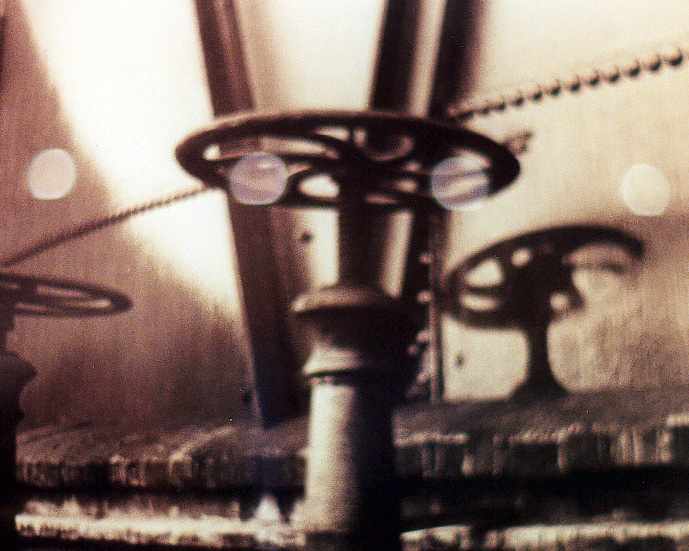
Shadows were left behind where objects shielded a surface from the heat. Where this happened, the shadow is the original color of the surface, and the area outside the shadow has been turned to a different color by the intense temperatures. By measuring the angles of the shadows it was possible to establish the exact location of the explosion. |
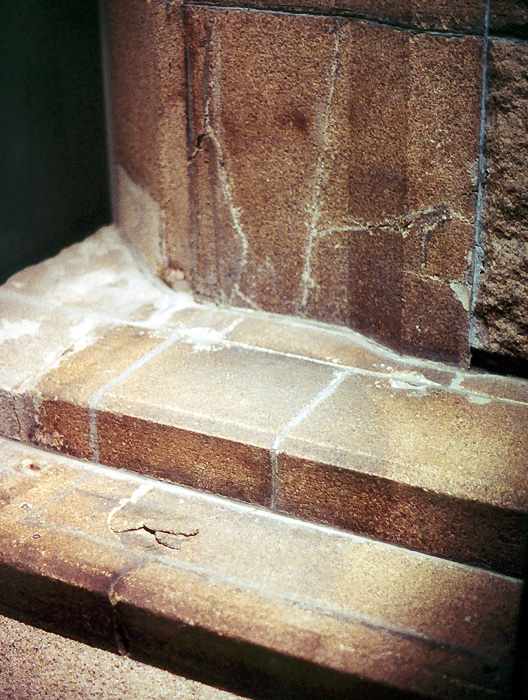
Some shadows were cast by people caught by the explosion. The museum has this section of a bank wall and steps which illustrates this. The circular grey patch on the steps is a shadow formed by a woman who was sitting there waiting for the bank to open for business. |
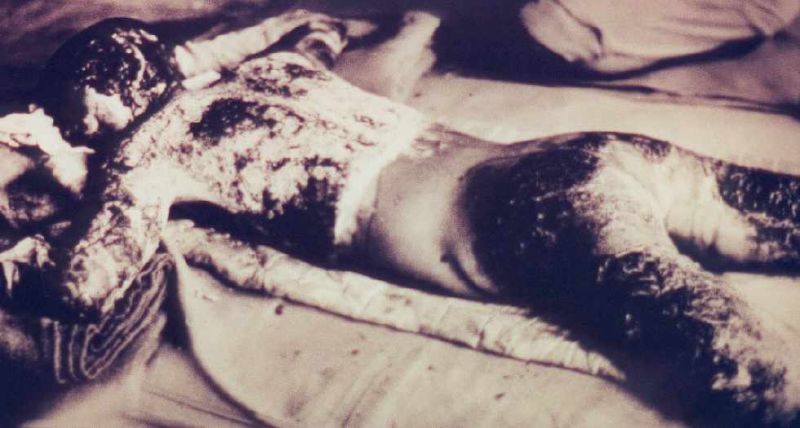
Many tens of thousands of human victims were caught outside at the time of the bombing. |
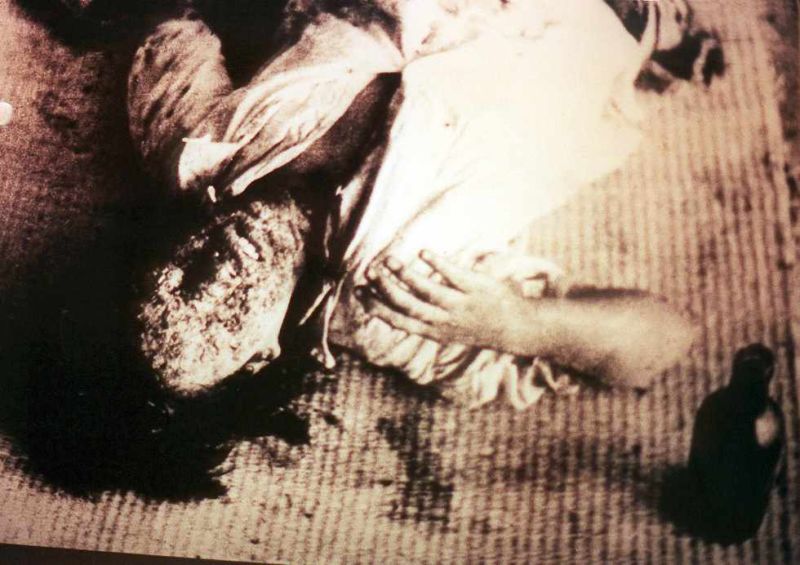
At the end of 1945 five months later 140,000 of the city's 350,000 inhabitants had died, and many more died as a direct result of the explosion in later years. |